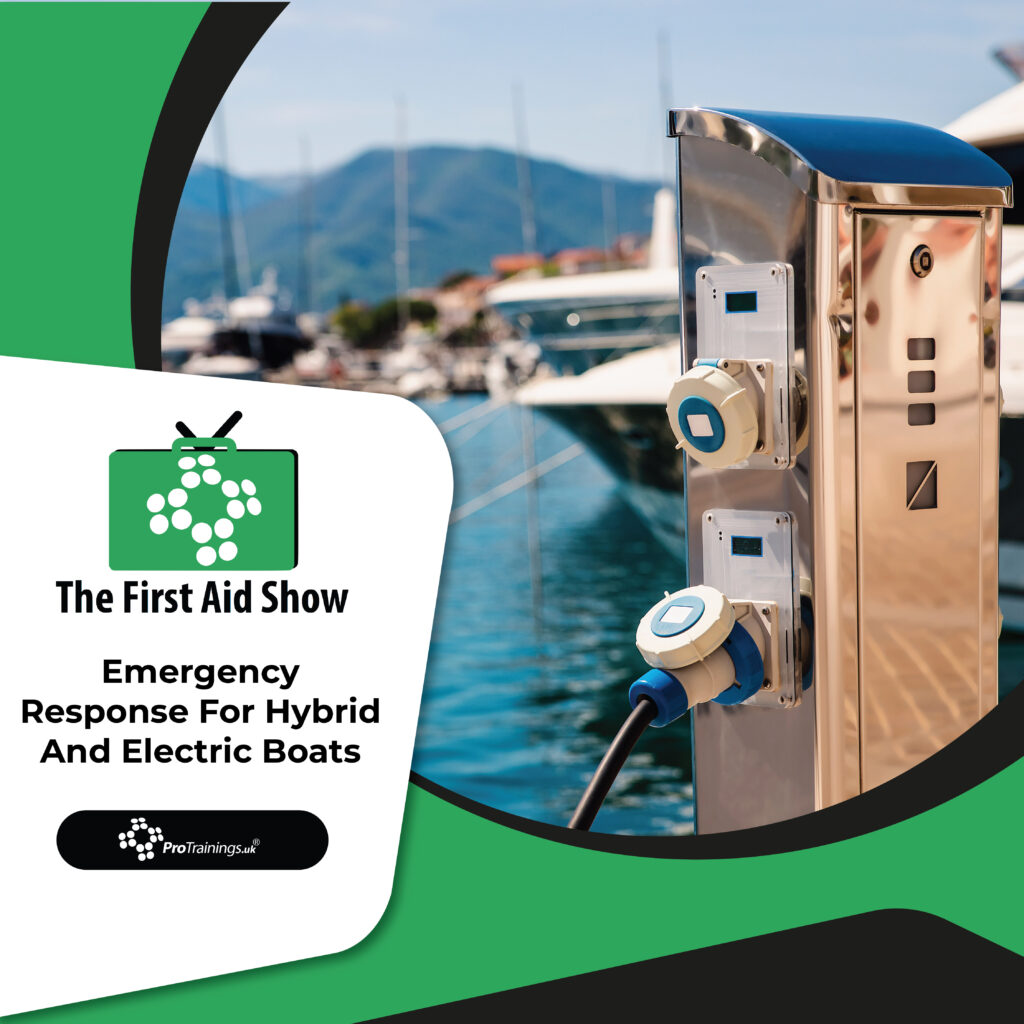Emergency Response for Hybrid and Electric Boats
Battery fires on boats pose significant firefighting challenges. Traditional methods like water or foam may not suffice for lithium-ion battery fires. Specialised fire suppression systems using dry chemicals or inert gases are often necessary.
Risks in Hybrid and Electric Boat Emergencies
High-voltage systems in hybrid and electric boats create additional risks for emergency responders. Improper handling without the right training and equipment can lead to dangerous electric shocks when accessing batteries or other electrical parts. A robust emergency response for hybrid and electric boats must include specific training and safety procedures for all crew members.
Preventative Measures and Best Practices
Several precautionary measures and best practices are crucial to mitigate battery risks on hybrid and electric boats:
- Regular Inspections: Conduct regular inspections of the battery systems to detect signs of wear, corrosion, or damage. Check that all seals and waterproofing measures are intact.
- Crew Training: Train all crew members on the risks associated with lithium-ion batteries and familiarize them with emergency procedures.
- Fire Suppression: Install fire suppression systems suited for lithium-ion battery fires and train crew members on their use.
- Environmental Safety: After a battery incident, monitor the environment for contamination. Implement necessary containment and cleanup measures if required.
- Battery Management: Implement battery management systems to continuously monitor the health and performance of batteries. Replace batteries that show significant degradation.
- Proper Disposal: Follow proper disposal and recycling protocols for old or degraded batteries. Ensure professionals handle these materials to prevent accidents.
Effective Emergency Response Implementation
Implementing a comprehensive approach is crucial for addressing the unique challenges of modern battery technologies and high-voltage systems in hybrid and electric boats. Rigorous safety measures and proper training can significantly reduce risks to crew members and the environment.
By preparing adequately and adopting these best practices, teams can mitigate risks effectively, ensuring safer operations and faster emergency responses.

